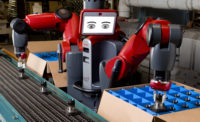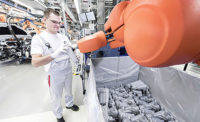Throughout its 107-year history, Cornell Dubilier Electronics Inc. (CDE) has placed great importance on manufacturing quality power capacitors, which are passive electrical components that temporarily store electrical energy in an electric field. Each capacitor features two terminals (conducting plates) separated by an insulating dielectric.
Engineer and inventor William Dubilier founded the company in 1909 to produce the Micadon, a capacitor consisting of mica and copper foil sheets sandwiched together and clamped. During WWI, the Micadon enabled transmission of wireless communication over longer distances more cost effectively than larger and heavier Leyden jars.
Evolving capacitor technology, coupled with the rise of radio and television broadcasting, brought phenomenal company growth over the next half century. By 1966, CDE possessed more than 350 patents in radio and electrical sciences.
Today, the company is the largest capacitor manufacturer in North America, and one of the largest such manufacturers in the world. Its many types of capacitors are used for airplanes, medical lasers, alternative energy, welders and generators. All of the company’s capacitors are made in ISO-9001 certified manufacturing facilities in Liberty, SC; New Bedford, MA; Mexicali, Mexico; and Shenzhen, China.
Last fall, managers of the Liberty plant purchased two Baxter robots to further improve product quality and increase production. Made by Rethink Robotics Inc., Baxter is a two-arm collaborative robot capable of picking and placing parts at any axis, lifting objects off a shelf, and loading machines in a horizontal motion.
One robot at the plant lifts a capacitor off a conveyor and places it at a workstation, where a label is automatically applied. The robot then puts the capacitor back on the conveyor. Further down the assembly line, another robot unloads a capacitor from a conveyor, inspects the capacitor with a built-in vision system (developed by CDE), and loads the capacitor into a crate that gets moved to the shipping department.
“When we looked to automate our processes in the past, the price [was] well into six figures,” says Daniel Brazinski, manufacturing manager at Cornell Dubilier. “Baxter allows us to significantly cut that price tag, while more effectively and flexibly achieving our automation goals.”
Introduced in September 2012, Baxter is a 3-foot tall robot with an animated face. Its latest version features the Intera 3.3 software platform, which enables the robot to move with much greater speed, precision and flexibility than the original model.
Operators select from four motion presets to accurately match robot performance level to the application. Express and fast motion presets rely on direct movement, whereas moderate and slow motion presets place a greater emphasis on deliberate movement.
Tasks are stored in the robot alphabetically, chronologically by last modification or chronologically by date of creation. Each robot arm offers seven degrees of freedom for maximum flexibility and range. End-effectors are easily interchanged for different tasks.
According to Brazinski, Liberty facility management is so impressed with Baxter’s performance over the past several months that it has identified six more tasks where the robot may be deployed. For more information on collaborative robots, call 617-500-2487 or visit www.rethinkrobotics.com.




